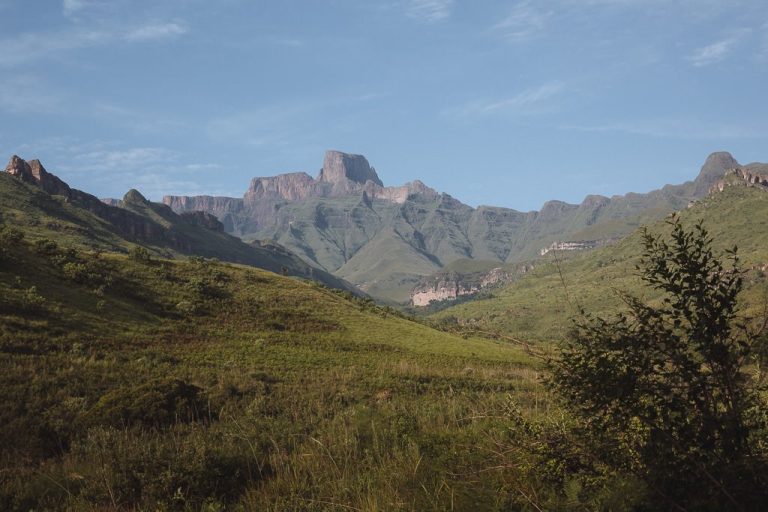Croatia is one of Europe’s most fun backpacking destinations, offering a mix of cultural and historical highlights with plenty of fun in the sun.
Beware: the coast does get crowded in summer, especially August. Luckily, Croatia hasn’t seen the kind of large-scale tourist development that has ruined other Mediterranean coastlines (such as in Spain), so while it can be busy in summer it’s also very charming.
If you love cute Medieval towns, beautiful islands and waterfalls, and historical cities, then Croatia will be just your jam.
Why go backpacking Croatia?
There are several key reasons to go backpacking in Croatia:
- Venetian and Roman-era historical sights. Once the heart of the Ragusan republic, the Dalmatian coast is dotted with old forts, monasteries, churches, and city walls. Well-preserved Roman ruins can be found in Split and Pula.
- Beaches & island hopping. Croatia is an ideal summer destination with warm Mediterranean waters, pleasant pebble beaches, and one of the best areas in Europe for island hopping excursions.
- National parks & waterfalls. Don’t miss Plitvice, one of Europe’s most beautiful waterfalls, though Krka has a lot going for it as well.
- Great travel circuit. Lots of fun backpacker hostels and easy transportation links make winding down the coast a breeze.
- Music festivals. Croatia has made a name for itself with numerous (mostly electronic) music festivals
If you’re from Europe, it’s a no-brainer to travel in Croatia at least once. Cheap budget flights go to Split, Dubrovnik, and (to a lesser extent) Zagreb from all over the continent.
If you’re from further away, then Croatia makes for a more original southern European destination than the usual Italy or France.
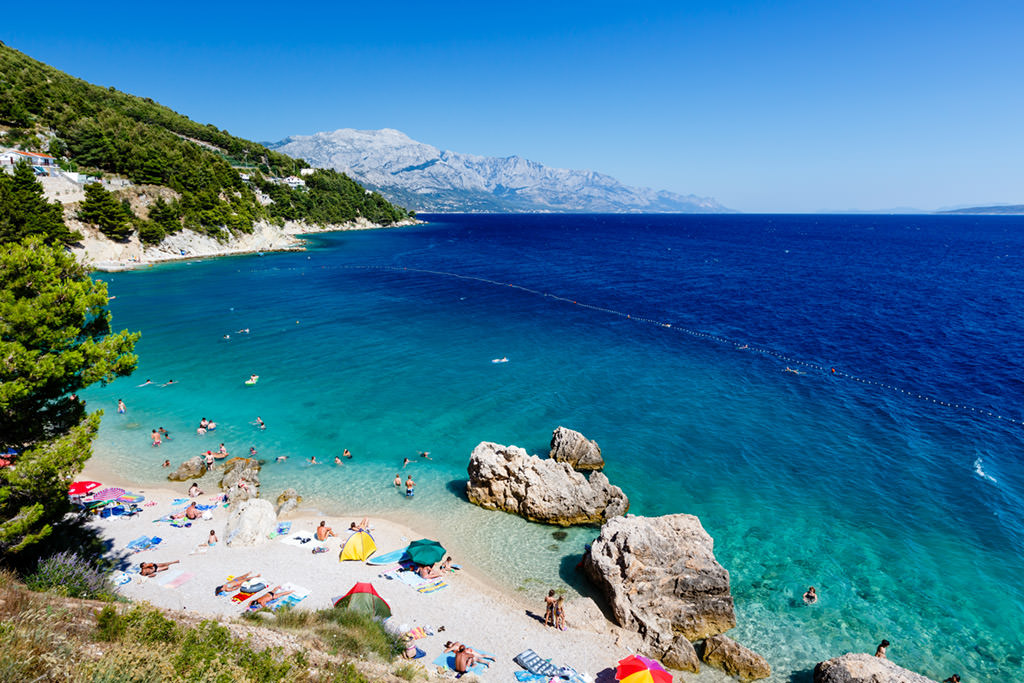
What are the hostels like?
If you’re a backpacker who likes to stay in hostels then you’ll be spoiled for choice in Croatia.
The vibe in the hostels is just as anywhere in Europe, though in Croatia you’ll often have a mix of ‘traveller’ types and people who are on a holiday to a specific place on the coast.
For example, in the seaside city of Split, I’ve found the hostels to have many guests carrying backpacks who are travelling through Croatia but also quite a few with rolling luggage who are there on a beach holiday and who are only staying in Split.
(If you want only pure backpacking vibes, consider backpacking in Bosnia or backpacking in Albania.)
Some hostels in Croatia are a bit like party hostels in the summer; check descriptions to make sure the hostels have the atmosphere you prefer.
You can find some specific recommendations for hostels in Split and hostels in Dubrovnik in their own posts, plus some of my personal favorites below.
Recommended hostels in Croatia
$$ Dubrovnik
Best time to visit Croatia
Croatia is hugely seasonal. As I quickly discovered when travelling in Croatia in March, the coast can be pretty much 100% dead in the winter and is just barely returning to life even in early-to-mid spring.
Unlike some other countries, I would not recommend travelling in the off-season in Croatia, at least if you’re going to the coast. Apart from the capital and the hinterlands, it’ll be a bit of a ghost town during this time of year.
In the August high season, it becomes a madhouse with tourists concentrated especially in Split and Dubrovnik, so this period has its own disadvantages.
Arguably the best time to visit is September. The waters will still be warm but the crazy August crowds have dissipated by now. The second best time to visit is late spring in May or June.
Plan your Croatia backpacking trip
Croatia backpacking map
Croatia is blessed with a 2000km long rocky coastline with loads of coves and islands, as well as several Venetian-era historical cities along the Mediterranean.
While less-visited, I also liked what I saw of the country inland. The more Central European feel makes these parts less glamorous in a sense, but not any less interesting. If you like travelling for the journey and to get a complete picture of Croatia, it’s worth including some of the interior.
The map below shows you some of the key places to visit in Croatia:
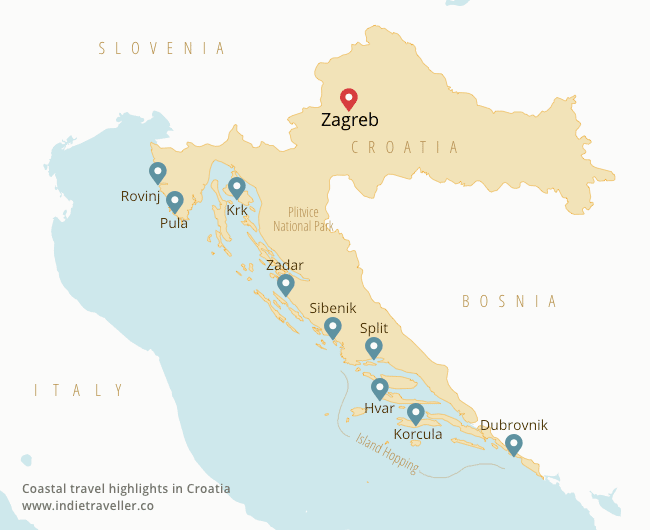
Places to visit in Croatia
I’ve had the pleasure of traveling in Croatia not just once but thrice. The following are my notes on some of the highlights in Croatia, covering them in roughly a south-to-north order.
As for the most popular backpacking destinations in Croatia, I find that Zadar always gets great reviews, and the island of Hvar is another backpacker favorite. You might want to give an extra night or two in these places.
Dubrovnik
The old city of Dubrovnik was once a maritime city-state with a wealth and influence rivalling that of Venice. Today, with its still intact Medieval city walls and its many churches, monasteries and palaces, it is quite possibly the most picturesque place in Croatia.
While Dubrovnik is very interesting I also want to warn you: it can be murderously expensive.
It’s also insanely busy in the summer, especially in July and August. Many travellers arrive in Dubrovnik with sky-high expectations before getting slapped by the crowds and high prices.
Go in the off-season if you can. I’ve been in Dubrovnik both in early spring and in mid-August and the difference was huge. You might find Dubrovnik somewhat tedious and stressful in season or very pleasant outside of it.
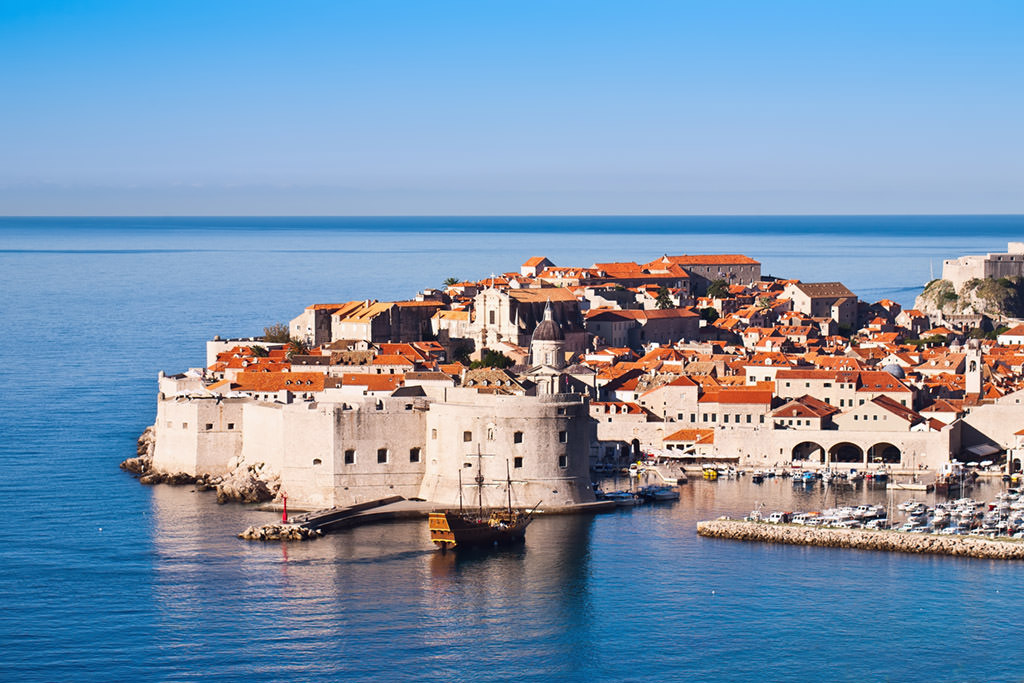
The city is obviously of major historical interest. Known in the Middle Ages as Ragusa, it functioned as a key hub for trade from the East, first under Venetian vassalage and later as an independent maritime republic.
At a minimum, be sure to walk the ancient outer walls and visit the world’s oldest working pharmacy at the Franciscan Monastery. A Dubrovnik Card will give you entrance to 9 major cultural-historical attractions.
The perfect spot to watch the sunset over the shimmering azure sea is the slightly hidden Buza Bar [map], on the southern edge of the Old City just outside its walls.
Dubrovnik’s maze of little side streets is also fun to explore, though don’t expect any grand discoveries here apart from maybe some stray cats and a few more tourist restaurants. Consider a walking tour through the Old Town to gain a much better appreciation beyond just seeing the old facades.
The city is used regularly for location shoots for TV shows and movies, most famously starring as King’s Landing in Game of Thrones.
Strangely, not even a single enterprising Croatian has thought of capitalizing on the city’s association with this once wildly popular TV show, so it’s all up to you to find some of the familiar locations.
I’m joking… there are Game of Thrones tours freaking everywhere! They’re good fun if you’re a fan, even if the last season was such a letdown. This ultimate Game of Thrones tour is by far the most popular and best-reviewed and will take you to all the most famous sites.
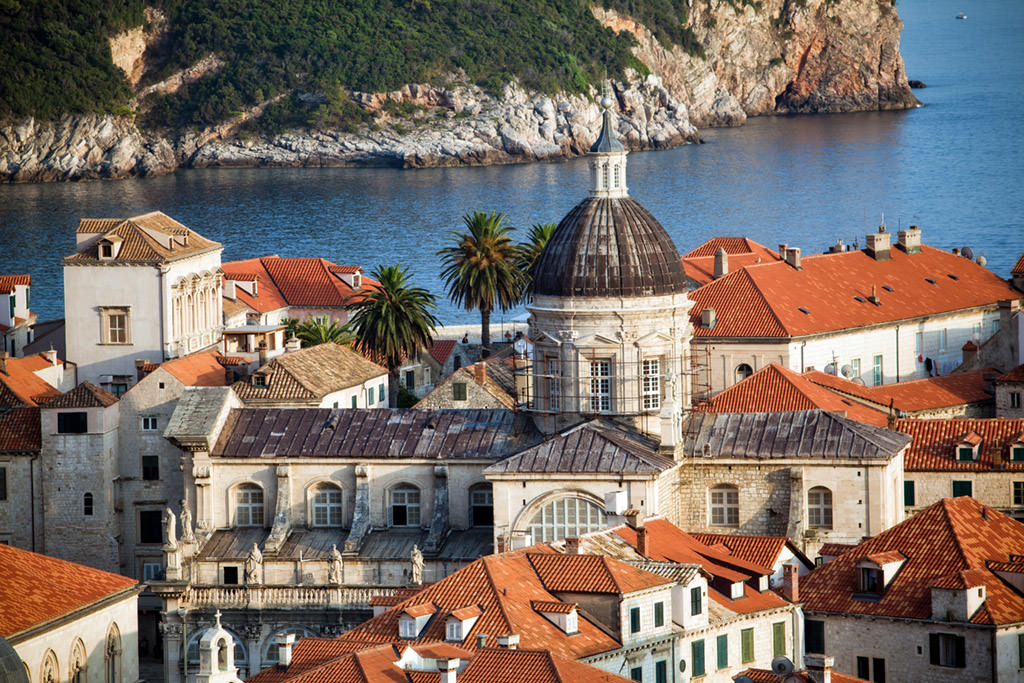
I actually once happened to visit Dubrovnik during the shooting of scenes for Star Wars: The Last Jedi and ended up having drinks with some of the camera crew and costume designers. Definitely not something I had expected!
Of course, Dubrovnik doesn’t need its pop culture fame to captivate you, as it is beautiful and interesting in its own right.
A cable car [map] can take you up Mount Srđ, from where you’ll have a superb view of the orange-roofed city. Hiking up there is also nice, though the hills are fully exposed so the heat can be intense on a summer day.
Next to the cable car station, you’ll find a fortress and the Museum of Croatian War of Independence, which is highly informative about the war of 1991 and well worth a visit.
By the way, my favorite hostel is definitely Dubrovnik Backpackers Club. It’s quite outside the old town but has a real traveler vibe. For a more modern hostel in the old town, check out Hostel Angelina.
Budget travel tip for Dubrovnik: accommodation prices skyrocket in the high season. In August, even a lowly hostel dorm bed in the suburbs will cost around 40 to 60 euro a night (up from around 10 Euros in low season). An interesting cost-saving tactic is to stay in super cheap Trebinje, just across the border in Bosnia, and take a day trip to Dubrovnik.
You could stay in Dubrovnik for several nights (I did this in the off-season), though the consensus among travellers seems to be that one full day in Dubrovnik is enough to see the major sights.
Hvar
The first thing I noticed about Hvar was the dozens of superyachts docked in the harbor, some of them even guarded by private security. It made me feel like I had arrived in some jetsettey place like Saint Tropez.
It turns out Hvar is in fact a popular port of call for the rich who come here to see and be seen. The island town is known for its nightlife, some of it expectedly well-heeled.
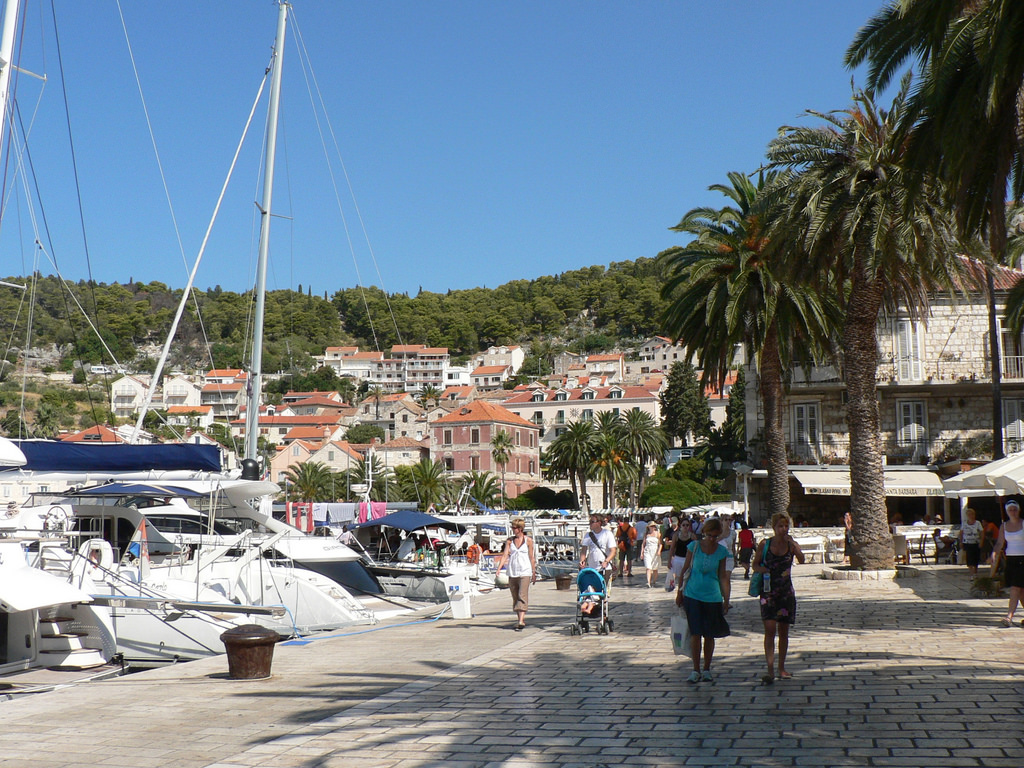
But despite the presence of some millionaires, Hvar does not require you to be one. Many restaurants serve great seafood at a still-reasonable price and the nightlife can basically be as high- or as low-brow as you want.
Hvar is a little flashy but still a little cute as well. The rich mostly hang out in their luxury resorts and exclusive private coves, leaving the town itself to a more diverse mix of visitors.
It’s worth climbing up to the fortifications above the town, and Hvar is also a great base from which to take day trips to smaller surrounding islands.
Korčula
As the most populated island in the Adriatic, Korčula has plenty of facilities for activities like cycling, kayaking, snorkelling, wine-tasting tours, and more.
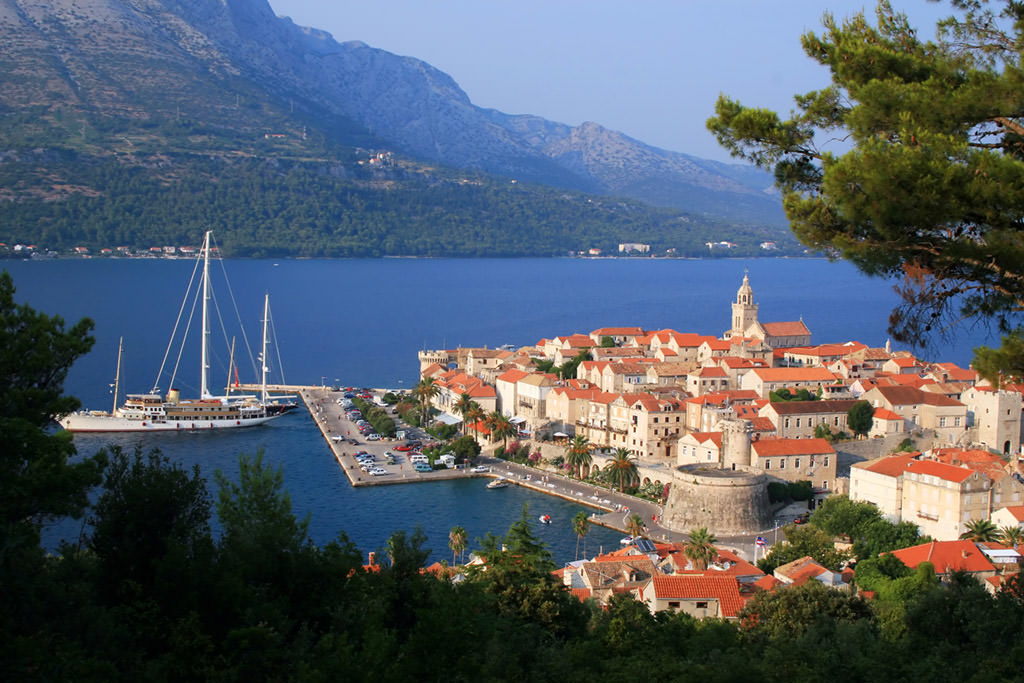
Cute Korčula Town is definitely worth a stroll. I also visited a house that was claimed to be the birthplace of famed explorer Marco Polo, though inside it was just an empty house without any kind of insight or information. I later learned it’s extremely doubtful Marco Polo ever lived here let alone set foot inside. I would give this so-called Marco Polo house a hard pass…
Sadly, there isn’t much more I got to see in Korčula as I made a brief stop here on my island hopping cruise. I would have liked to explore the interior of the island as well!
Split
Hmmm, well, I’m a little split on Split.
It is very pretty with its palm-lined boulevard along the harbor and its small historic centre built around the remains of a Roman palace.
Standing surrounded by the Diocletian’s Palace’s remarkably intact Roman arches gives you real sense of ancient history. It’s worth springing for a guide here to give you some historical context and stories that will bring the place to life.
I recommend this specific 1.5 hour walking tour in Split which will give you a lot of insights you won’t otherwise get if you explore on your own.
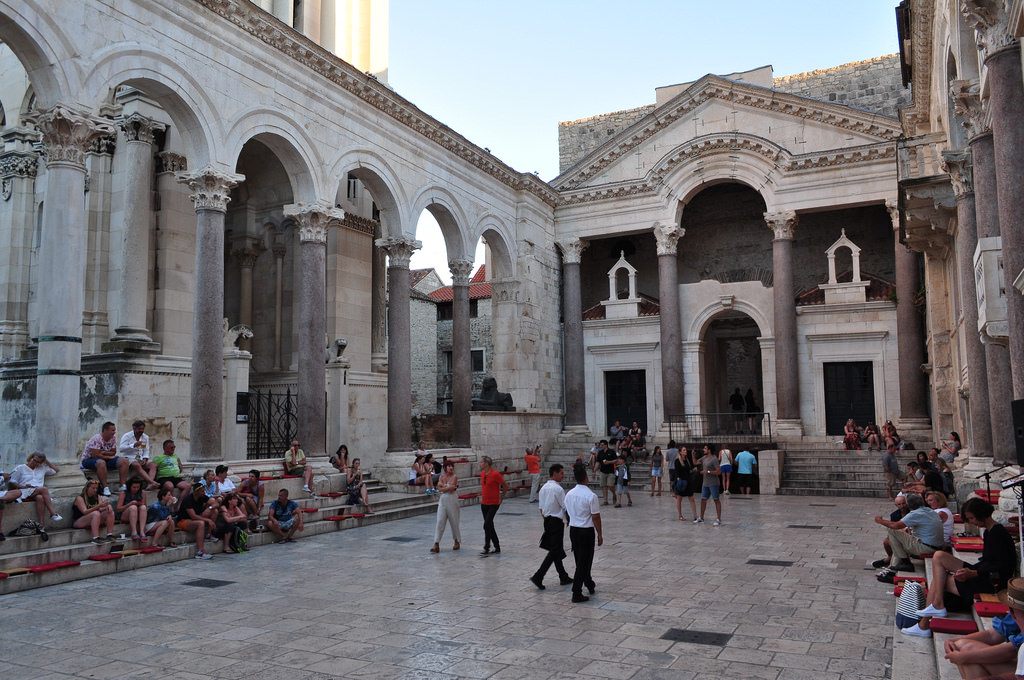
While it’s a captivating place, the sights in Split can be seen in just an afternoon, after which I honestly was left wanting more. As soon as you leave the harbor enclave, you realize it’s a not too terribly interesting city for the most part.
I visited when there was a music festival taking place which made me extend my stay by another day, but I may not have done this otherwise.
If you’re for want of a goal, I can recommend going to the pine forest peninsula of Park Šuma Marjan [map] and climbing its hill for some great views of the bay.
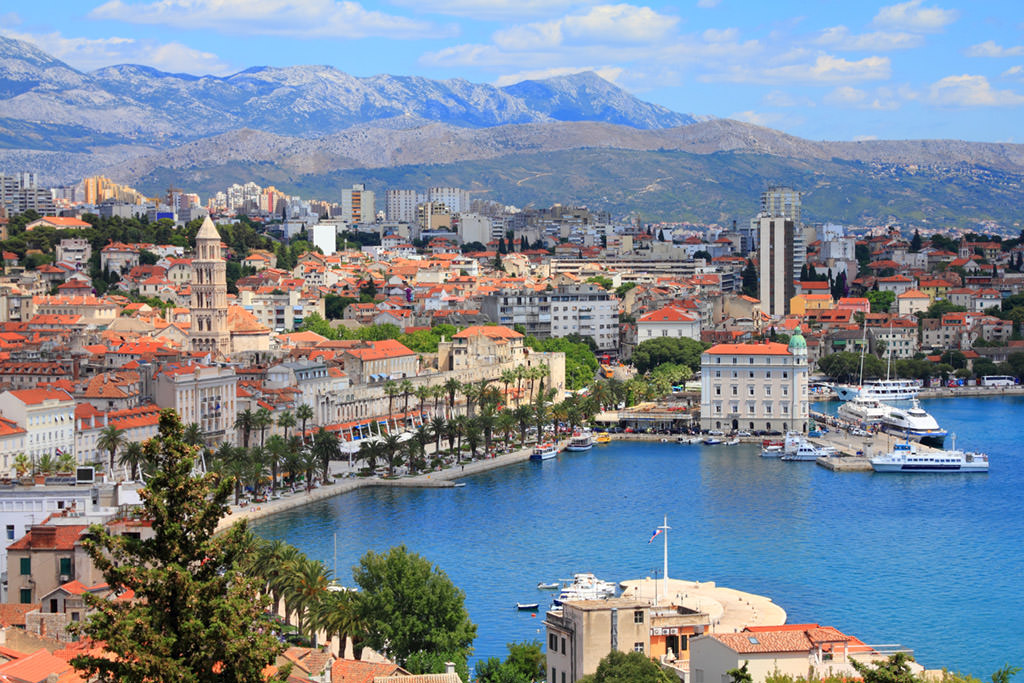
While I liked Split quite a bit (hey, that rhymes!), there were other places I liked even more. Still, it’s a key travel hub (with its own airport) and can make for a good launching point for trips to Hvar and Krka National Park. Staying at least a night or two is worth it.
I’ve visited Split on three different Croatia trips. My favorite hostel is the Gravitas Hostel which is just off the old town streets in the center. You can check availability for Gravitas Hostel at Hostelworld.
Šibenik
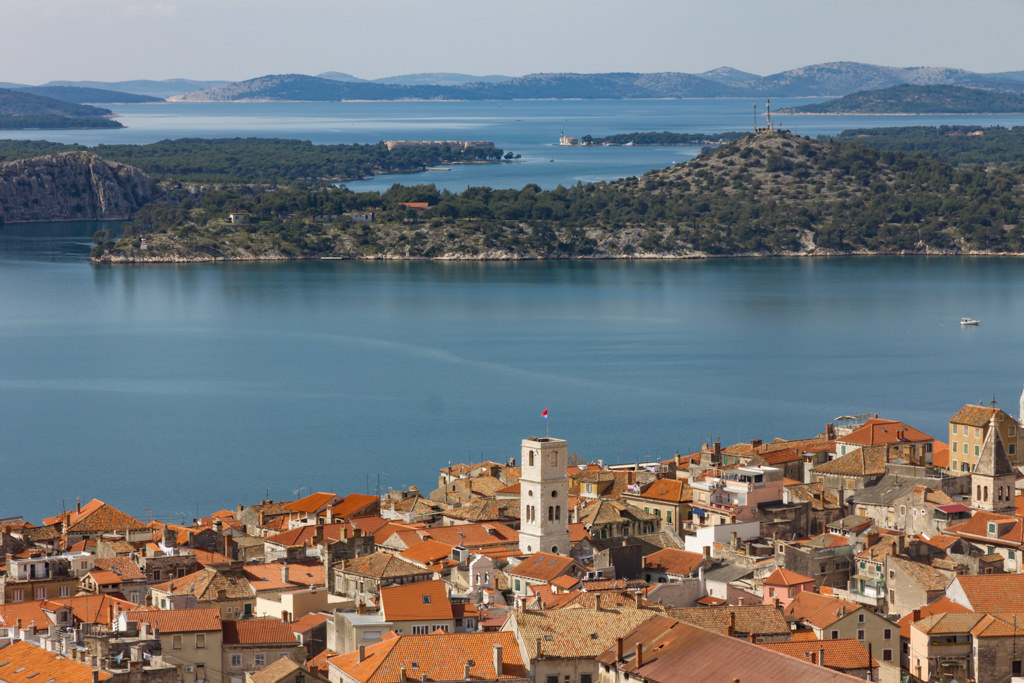
It doesn’t feature in many itineraries, but I came across Sibenik while road tripping along the coast of Croatia. Located right between Split and Zadar, it’s a great place to stay the night.
It’s cute, not so crowded, and conveniently located near Krka National Park. I think it’s a lovely alternative to some of the more famous towns, and I highly recommend a stay there if you’re into places that may not be in the usual top 5 but have their own understated charms.
You’ll find a beautiful UNESCO-listed cathedral, some remaining city walls from the Venetian era, as well as two hilltop forts from where you get a great view of Šibenik and its bay. There are also half a dozen good pebble beaches in the surrounding area.
Krka National Park
The waterfalls at Plitvice are Croatia’s most famous, but I think the smaller ones at Krka are equally worth a visit.
From the nice town of Skradin it’s about an hour’s hike along the river to the waterfalls. In season you can also take a shuttle boat up the river, and some private yachts come in here from the Mediterranean in summer as well.
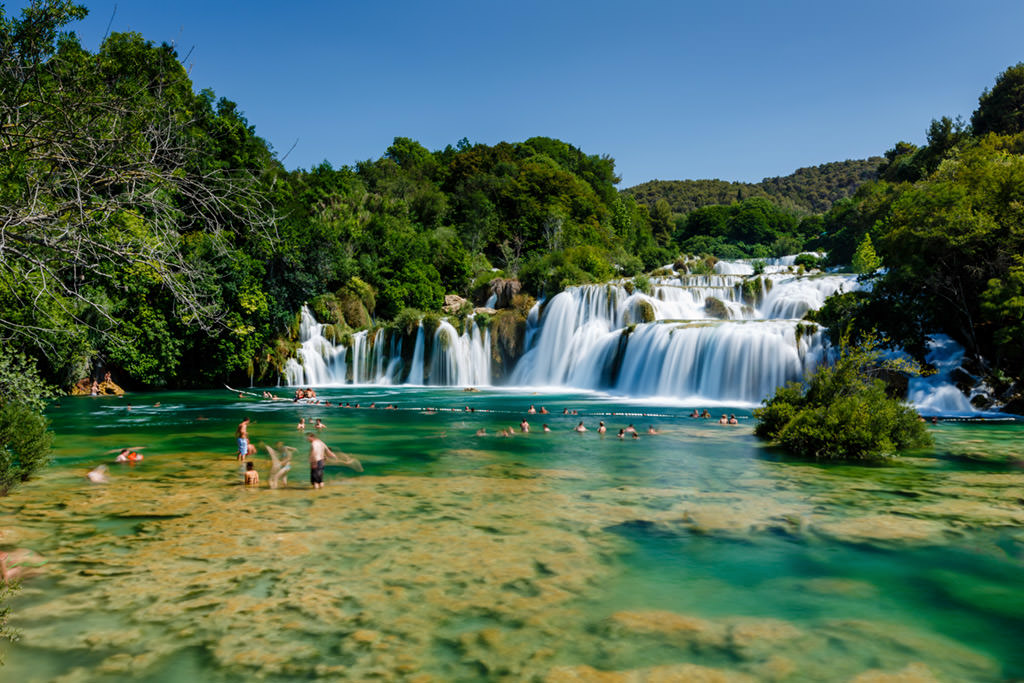
Eventually you’ll get to Skradinski Buk, a wide cascade of small lakes and waterfalls, and with a number of paths snaking through the area. You are allowed to take a swim in the lower lake.
You can hike further onwards to Visovac lake, which features an island monastery. Getting there by foot can take several hours, but those who don’t like walking can also take a shuttle boat via the river.
Zadar
Zadar is not as big as Split or Dubrovnik, but I think it’s a wonderful place just to be for a while. You’ll find the historic main town on a little peninsula bounded by Venetian city walls, and it’s small enough to cover easily by foot.
It’s a favourite among backpackers as Zadar has plenty of charm and isn’t as hectic or expensive as Dubrovnik. You can stroll the atmospheric old streets, have a drink on the river front, and enjoy some good seafood.
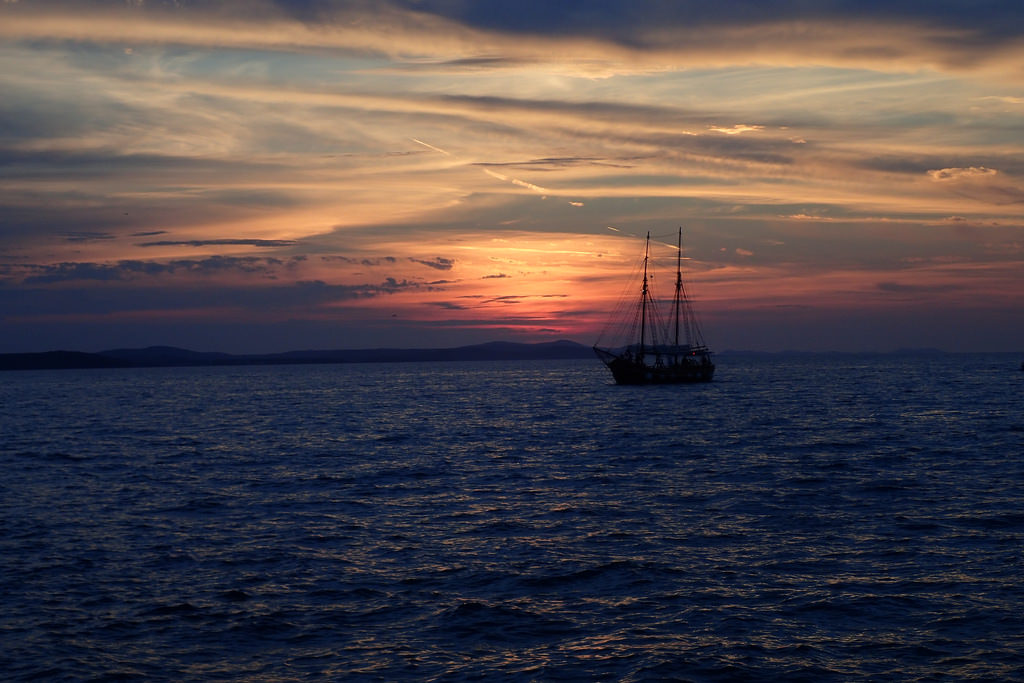
Besides a slew of cathedrals and Venetian-era buildings, a very interesting thing to see is the Sea Organ. Built in 2005, it is basically a set of steps along the seafront where strategically placed holes create a constantly changing melody from the waves flowing into them. It’s a wonderful place to watch the sunset.
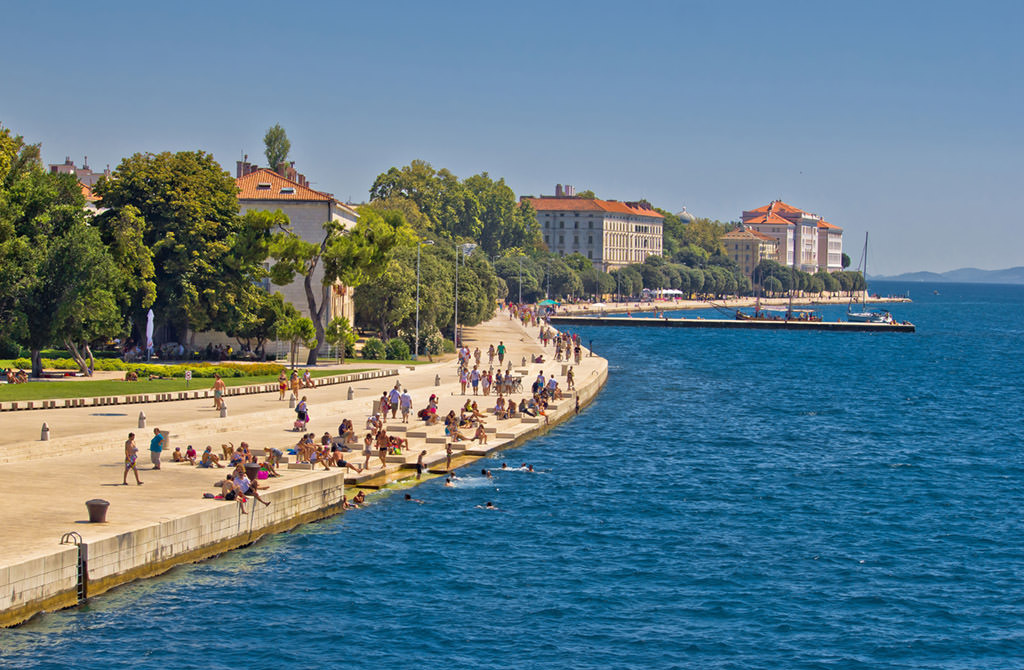
A sight I don’t recommend is the local hospital, where I had to take my travel buddy after he drunkenly tried to make spaghetti at the hostel and slammed his palm flat-out onto the stove to ‘check if it’s hot’. The staff understandably couldn’t hide their amusement at these idiot tourists, though they did treat my friend’s burns very well. On second thought, I give the local hospital in Zadar five stars.
Several beaches nearby provide some opportunities to relax, and I guess they’re also a great place to pass the time while your burn wounds are healing.
Zadar might not have so many attractions (on paper at least), but I think this humble city is a great place to stay, and possibly my favorite of Croatia’s major coastal cities.
Plitvice Lakes National Park
Chances are, you’ve already seen Plitvice. Maybe not in person, but I bet you’ve seen it pass by on Pinterest or Instagram. The waterfalls are super photogenic and, I think, deserving of the hype.
Paths and some little boardwalks take you along all the moss- and fern-covered cascades. You can also walk up the hills for some overview shots of the waterfalls.
The azure waters are crystal clear and easily reminded me of some tropical waterfalls I have seen in Asia or South America.

The park isn’t near any towns so it needs a dedicated day trip. There are a few basic guesthouses and hotels that let you stay overnight in the park, but most people just go to Plitvice and return. Because it’s not near a city or town, it’s worth booking a guided tour with transportation from Split.
By the way, since it’s a protected area you can’t swim in the waters. For that, you need to go to Krka.
Karlovac
Most people go to Croatia to see Instagram-worthy historical towns along the Mediterranean coast, not an unassuming town in the mainland. Away from the allure of Venetian history, Karlovac places you in a decidedly lumpier Eastern Europe.
And yet you may find it worth stopping here if you’re not only focused on a sun-and-sea holiday.
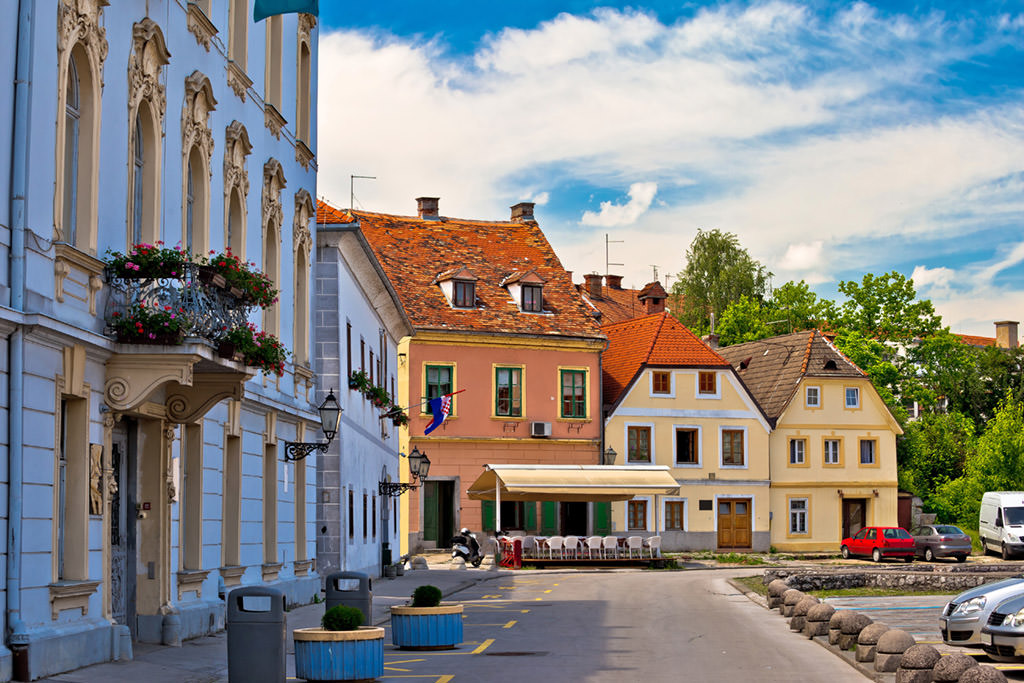
In Karlovac, you’ll get to see a different slice of Croatia, as it is a place without a major tourism industry where you can more easily rub shoulders with the locals. The city itself is not always the prettiest in a superficial sense, but it’s cheap and surrounded by some less-known attractions, forest trails, and multiple rivers inviting kayaking and swimming excursions.
I wasn’t really gorging on grilled seafood in Karlovac, as it’s mainly sausage-and-mash type food here instead. I also wasn’t having drinks in trendy cocktails bars, just having a pint in an 80ies rock bar where I met some guys who were hitchhiking across Europe. I liked it a lot in a down-to-Earth way and for the contrast it offered to the coast.
I highly recommend staying in Hostel Na Putu in Karlovac, which is run by a local couple and which has a true backpacker atmosphere. They do a great job telling you about all the things to do in Karlovac as well. You can check Hostel Na Putu on Hostelworld here.
Island hopping in Croatia
The southern Dalmatian islands are among the most popular places to visit in Croatia and many people go on an island hopping tour here. A typical itinerary takes you from Split to Dubrovnik via Brač, Hvar and Korčula, with usually a few different smaller stops throw in as well.
To see the islands you have essentially two choices: do-it-yourself by taking catamaran ferries to some of the largest islands, or taking an organized 1-week mini cruise. Numerous companies run island hopping cruises using motorized yachts, and they’re a fun way to have a lazy summer holiday around the Adriatic coast.

The advantages of a cruise are that you’ll sleep on the boat, see some of the main islands plus usually some tiny ones (not serviced by ferries), and you can jump into the Mediterranean waters from your boat every day.
I did a Croatian mini cruise a bunch of years ago when I was a little younger. It was perfect for some unpretentious fun in the sun. If you book through popular operators like Top Deck, Busabout or Contiki, know that you’ll basically be put on a backpacker booze cruise. If you don’t mind a bit of partying, you’ll surely enjoy it!
One downside to the cruises is that you’ll spend only a brief time in each place. Don’t book the cheaper lower quarters unless you want to sleep next to a running engine.
Where to go after Croatia
If your trip is not limited to only Croatia, then there are some amazing other destinations nearby that are highly worth checking out.
Being so close to the border of Bosnia, a trip into this neighboring country is well worth the minor effort of getting there. Visiting the Medieval town of Mostar from either Split or Dubrovnik barely adds any travel time and will be highly rewarding.
I also love the laidback and off-the-beaten-path town of Trebinje, just over the border in Bosnia from Dubrovnik. (If you think Dubrovnik is too expensive, consider staying in Trebinje and visit on a day trip.)
You can read more about backpacking Bosnia in my other guide. By the way, the Bosnian capital of Sarajevo is one of my favorites in the whole region and is fairly easily reached from southern Croatia.
Just a little beyond Dubrovnik also lies Montenegro with its stunning Bay of Kotor. It’s an epic place and takes just 2 ½ hours by bus from Dubrovnik.
Are you planning a trip through the entire Balkans, the region of southeastern Europe that Croatia is a part of? Then don’t miss my tips for backpacking the Balkans.
Some links may be affiliate links, meaning I may earn commission from products or services I recommend. For more, see site policies.
Posted SEP 14, 2022 (Updated Sep 15, 2022)





